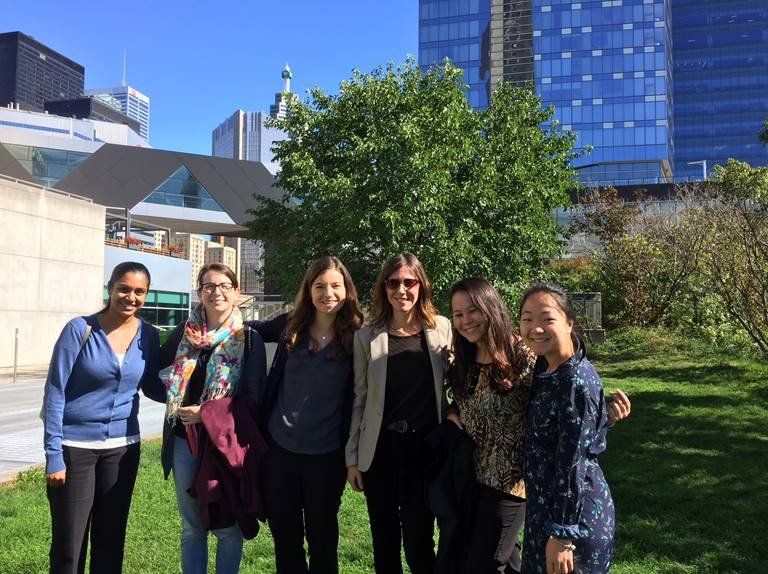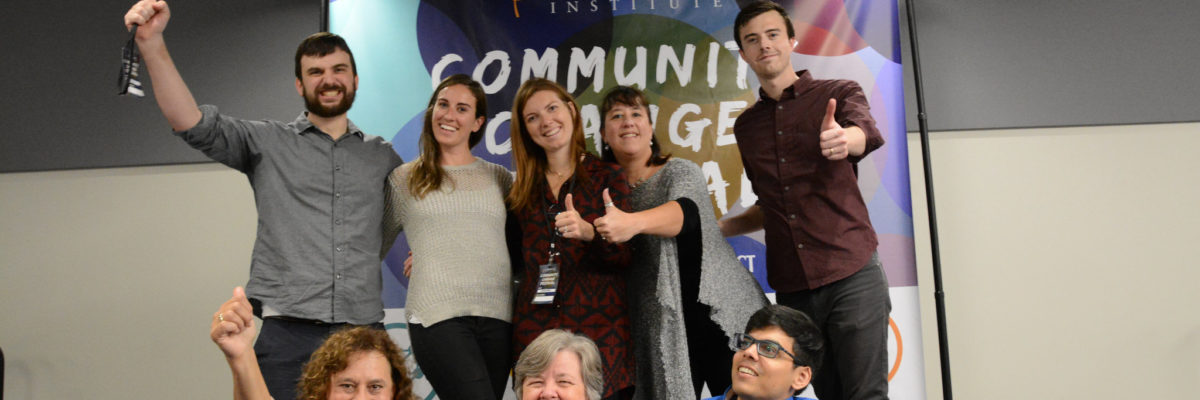At the Tamarack Institute’s #CommunityChangeFestival last week, designer George Aye said that “visual hierarchy makes the complex simple.” As a designer myself, this idea really resonated with me, but I wanted to take it a step further.
As change-makers, our role is to make the complex relevant.
Tamarack describes complex problems like “raising a child,” often with ambiguous and unknowable solutions given that the same parents can raise two children the same way with vastly different outcomes. Climate change is the epitome of a complex problem. It is easy to get wrapped up in the frustration of convincing others to understand and prioritize climate actions through a simple environmental lens. That’s why the multiple benefits of our work are key to driving community change.
Tamarack’s mission statement is “Building a connected force for community change.” Over the course of the conference, I had the opportunity to learn about systems change from the Innovation Office in the City of Chicago to community resilience planning in Queensland, Australia. I got to spend the time to reflect on the work we’re doing to drive the multiple co-benefits of climate action throughout the GTHA. I feel incredibly grateful to be part of a network of passionate, dedicated individuals – particularly our collective TransformTO team – and I can’t wait to see how we incorporate these learnings into the rest of our work.
Here are two takeaways and tools to center relevance at the heart of the conversation:
- Try the Peer Input Process with both context and content experts to find what resonates and where the gaps lie
New, diverse perspectives can improve the design of our work to be more relatable to people’s daily lives. The Peer Input process is designed to collect new perspectives and insights on your current community change challenge in a fast-paced way. Here’s how it works: one person has ten minutes to present the challenge and five minutes to answer questions. The other group members then have ten minutes to discuss potential solutions. The twist: the initial presenter cannot speak while their initiative is being discussed by other group members. Without the ability to speak, the presenter can only listen and reflect on the limitations of how they framed the challenge and the local context.
So on Day 3, TAF’s Mary Pickering, Lyn Adamson from ClimateFast, and Megan MacLean and Tamara Grossutti from the City of Toronto’s Energy and Environment Division co-led a community engagement session to test out the Peer Input Process based on our TransformTO community engagement initiatives.
We asked the audience: “What type of engagement will mobilize diverse community intelligence and resources to address local priorities and contribute to an equitable low-carbon city?”
In the conference setting, audience participants represented 36 countries around the world and a variety of sectors including health, social service agencies, education, and municipal government. While our peer input processes shed lots of light on potential high-level recommendations (e.g. clearly articulate the connections between climate actions and health, social equity, and local jobs), the conversations lacked context experts (i.e. individuals who can provide meaningful perspectives on the issue from their lived experience). In future, it was evident that we should have set the stage to better address which local communities we hoped to engage before we could dive into possible solutions.
- Build shared sense-making with a Data Walk
Data is powerful, but it is not enough to drive community change. Tamarack introduced the idea of “Data Walks,” a tool that allows relevant stakeholders and community members to read and interpret data, apply it to real life and discuss how it aligns with their own personal experience. It’s a rotating workshop with posters of different datasets on the wall (survey data, program data, neighbourhood and demographic data). Participants are allowed 5-10 minutes for each section with discussion questions like “What are you surprised by? What is still unclear?”
Let’s take the example of bike safety. Community residents can talk to each other about their concerns and share stories of how protected bike lanes improve their cycling. Data walks can provide additional information to help validate and empower community members to address local concerns. For example, 77% of survey participants in Toronto felt that protecting bike lanes from car traffic would improve cycling a great deal. In a separate study from Oregon, 60% of individuals said that safety was a major detriment to them using active transportation. The TransformTO modelling shows that active transportation is an important step in reaching our climate target of 80% emissions reductions by 2050. This data can change the conversation to encourage dialogue and focus on future solutions instead of dwelling on the current situation.
Similarly, during immersive city tours, we learned how the Parkdale People’s Economy Project designed their community visioning and planning process to identify key neighbourhood assets and values.
Their community visioning process emphasized statistics to lay the foundation for shared understanding about their neighbourhood. For example, “South Parkdale is made up of 32.1% of recent immigrants and 34% of low-income individuals. 90% of residents are renters.” It was really powerful to see how the Parkdale People’s Economy project recognized that they could only have truly participatory democracy if they could articulate the facts and facilitate meaningful dialogue based on as much information as possible.

Conference participants (left to right): Dusha Sritharan from the Toronto Environmental Alliance, Megan MacLean and Tamara Grossutti from the City of Toronto’s Energy & Environment Division, Keagan Gartz from CycleTO, Emmay Mah from Enviromentum, Diana Yoon (me!)
Cover photo credit: Tamarack Institute

